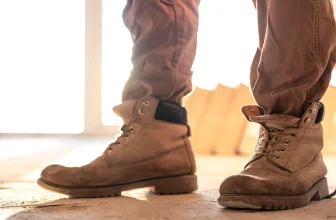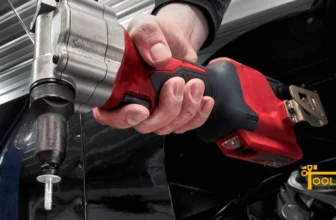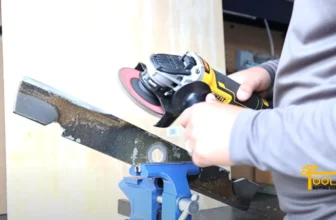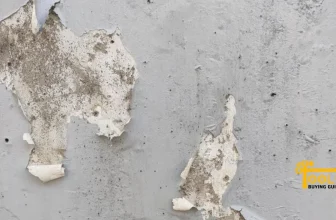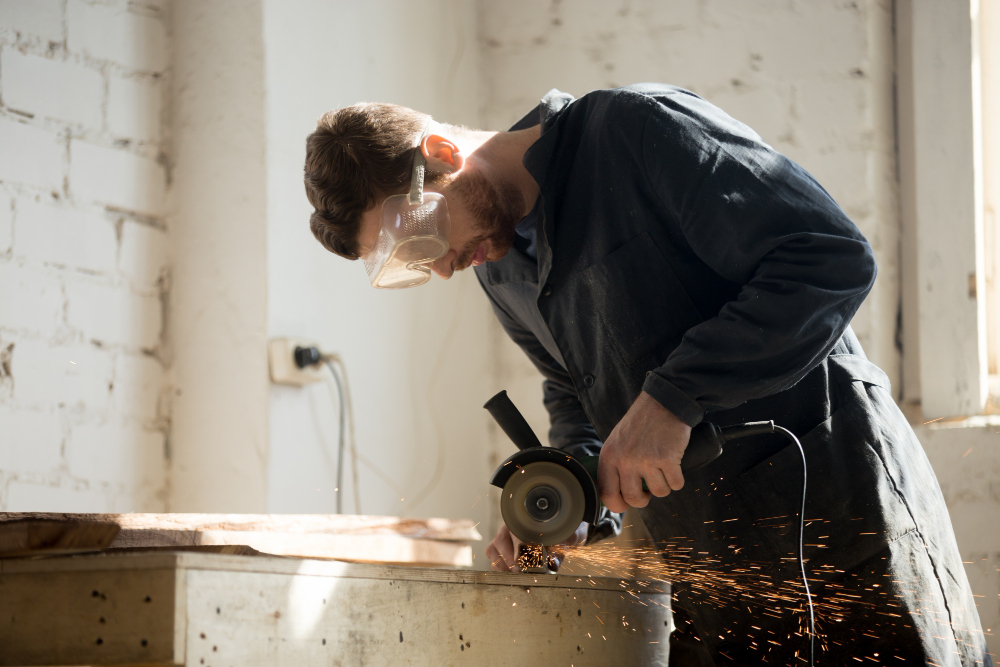
Are you thinking of taking on a DIY project? Perhaps you have a broken object that needs to be fixed. You may want to get creative and build something from scratch. Whatever the project may be, an angle grinder is a tool that can help you out. But how to use an angle grinder?
In this blog post, we’ll go over the basics of how to use a angle grinder. We’ll also provide some tips for grinding on how to use this power tool safely.
Uses of an Angle Grinder
An angle grinder is a power tool powered by electricity or compressed air (also known as a pneumatic grinder) and is designed for various uses. Here are some of the most common uses for an angle grinder:
Cutting hard material
One of the most common uses for an angle grinder is to cut through hard materials such as Metal, Concrete, Bricks, Tiles, wood and even Paint Removal. You’ll need a grinding wheel with a diamond blade attachment to do this. The diamond blade attachment can easily cut through most types of hard material. It is important to use a guide such as a straight edge or a jig saw to maintain the stability of the material being cut. This will help ensure that your cuts are accurate and even.
Polishing metal surfaces
An angle grinder can be a polishing tool for those who want to give their metal surfaces an extra shine. Using an abrasive pad or wheel, you can buff and polish your metal surfaces to give them a smooth finish. Be sure to use a low-speed setting so the material is not damaged. You may also want to use a lubricant such as oil when polishing to reduce friction and prevent the metal surface from becoming too hot.
Grinding mortar and cement
An angle grinder is used to grind mortar and cement. This process is commonly used when repairing brick walls or other masonry surfaces. In order to do this, you’ll need a grinding wheel with a cup brush attachment. Once the attachment is in place, you can grind away at the mortar or cement until it has been sufficiently removed. Wear protective gear when using a grinder for this project.
Read Also: What Size Angle Grinder to Cut Concrete?
Shaping wood and plastic surfaces
An angle grinder can also be used to shape various materials, including wood and plastic. A grinding wheel with a sandpaper attachment can be used to shape the material for wood. For plastic, you’ll need a grinding wheel with a carbide-tipped blade attachment, enabling you to cut through the material easily.
Removing rust and paint
Finally, a grinder work can remove rust and paint from metal surfaces. You’ll need a grinding wheel with a cup brush attachment to do this. Once the attachment is in place, you can grind away at the rust or paint until it has been completely removed. Wear protective gear when using angle grinder for this project.
Steps for Using an Angle Grinder Safely
Now that you know some of the most common uses for an angle grinder, let’s look at how to use it safely and effectively. Here are some grinding tips on how to use a grinder tool:
Using the right angle grinder for your project
The first step to safely using an angle grinder is ensuring you have the right grinder for your project. Different types of angle grinders are available, ranging from small handheld units to large industrial-grade machines. For most DIY projects, a small handheld model will suffice.
The attachments you use with your angle grinder will also depend on the project you’re working on. For example, if you are cutting metal, you will need a angle grinding wheel with a diamond blade attachment. For polishing metal surfaces, you’ll need an abrasive pad or wheel. And for removing rust and paint from metal surfaces, you’ll need a cup brush attachment.
Preparing and wearing appropriate safety gear
An angle-grinder requires safety gear to protect yourself from potential injury. The most important safety gear is a face shield, protecting your eyes from flying debris. You should also wear a dust mask to prevent inhaling any particles the flat head grinder creates. You may also want to wear gloves and other protective clothing. To protect your hearing, it is recommended that you wear earplugs or noise-canceling headphones.
Utilizing a guide to keep the blade steady and secure
An angle grinder blade is extremely sharp and can cause serious injury if it is not used correctly. To ensure your safety, you should use a guide such as a straight edge, or jig saw to keep the blade steady and secure. This will help to keep the blade from slipping and potentially causing an accident.
For best results, ensure the guide is securely attached to your project before using the angle grinder.
Maintaining proper control of the tool
You can not use an angle grinder safely if you do not properly control the tool. Ensure your grip is firm and the blade or attachment is securely attached to the angle grinder before using it.
When operating the angle grinder, be sure to keep your hands away from the blade and take care not to let it slip out of your grasp. Some angle grinders may also have an on/off switch that must be activated to use the tool.
Removing material from the project area carefully
The materials the angle grinder removes can be hazardous to the user and the people nearby. These materials can include dust, metal shavings, and sparks.
To avoid these hazards, removing material from the project area carefully and slowly is important. This will help to reduce any potential danger associated with the angle grinder. Additionally, if possible, keeping the grinder well away from other people or objects in the area is best.
Read Also: How to Change an Angle Grinder Blade?
Cleaning up the project site after the use of an angle grinder
Once you are done using the angle grinder, it is important to clean up the project site. This includes disposing of any debris the tool creates, such as dust or metal shavings.
Additionally, you should remove any attachments used in the project, such as grinding wheels or sandpaper, and store them safely. This will help to ensure that no one is injured when using the angle grinder in the future. Following these steps will help you to use an angle grinder safely and effectively.
Frequently Asked Questions
The proper way to use an angle grinder is to ensure you have the correct safety gear (gloves, eye protection, and mask). Ensure the angle grinder is correctly adjusted with the appropriate guard and handle. While using the angle grinder, hold it firmly with both hands and keep your arms close to your body. Keep aware of kickback and use a steady speed while cutting/grinding material.
Do not use the angle grinder with damp material. Do not overreach, and never leave the grinder running without supervision. Make sure to always check the wheel for damage before starting. Additionally, do not try to force the cut/grind, as this can cause kickback.
When using an angle grinder, always use the correct side – usually the right-hand side of the blade or disc. This will help ensure a precise and accurate cut/grind with minimal risk of kickback or other accidents.
The recommended approach when using an angle grinder is to push rather than pull the blade/disc. This helps minimize kickback and ensures you have better control over the tool.
Always ensure you wear proper safety gear when using an angle grinder. Keep the guard/handle firmly in position and do not overreach or try to force the cut/grind. Lastly, inspect the wheel before beginning, and always use the correct side of the blade/disc.
The best speed for an angle grinder will depend on what you are using it for. Generally speaking, the higher the speed, the faster you can grind/cut material. However, if the angle grinder is too fast, it can cause kickback and loss of control. It is always best to start at a low speed and gradually increase depending on your task.
Conclusion
Now that you know how to use an angle grinder safely and efficiently, it’s time to put your knowledge into practice. With the right angle grinder and the right techniques, you can easily finish your DIY projects.
Always remember to use proper protective gear, such as safety glasses and gloves, and never forget to unplug the tool when you’re done. With these grinder tips in mind, you’ll be able to tackle all sorts of projects with an angle grinder! Happy DIY-ing


